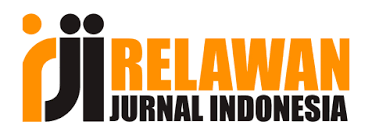Gender and Age Characteristics of Communicative Discourse (As an Example of Uzbek Phraseology)
Abstract
This study investigates gender and age characteristics in Uzbek communication discourse through the analysis of phraseology, which mirrors cultural and social norms. Despite its significance, limited research has explored how phraseological units differ across gender and age groups in the Uzbek language. Addressing this gap, the study aims to identify variations in the use and role of phraseological expressions among men, women, and different age groups. Using a qualitative methodology, the research examines the communicative functions and influence of phraseological units within discourse. The findings reveal notable differences in phraseological usage, shaped by gender and age, highlighting their importance in reflecting social dynamics. These results contribute to a deeper understanding of the interplay between language, culture, and identity, offering insights for linguistic and cultural studies.
References
[2] R. U. Akhrorova, Linguistic Features of Semantic Lexical and Phraseological Units Related to “Youth” in the French and Uzbek Languages, Abstract of Dissertation for Candidate of Philological Sciences, Tashkent, Uzbekistan, 2020.
[3] A. Cowie, "Phraseology," in The Encyclopedia of Language and Linguistics, R. E. Asher, Ed., Oxford, UK: Oxford University Press, 1994, pp. 3171.
[4] J. Firth, Papers in Linguistics 1934-1951, Oxford, UK: Oxford University Press, 1957, pp. 233.
[5] A. Mamatov, Issues of the Formation of Phraseologisms of the Uzbek Language, Abstract of Dissertation for Doctor of Philological Sciences, Tashkent, Uzbekistan, 2000.
[6] A. Nosirov, Semantic-Stylistic and National-Cultural Characteristics of Proverbial Phraseologisms in the French, Uzbek, and Russian Languages, Abstract of Dissertation for Doctor of Philological Sciences, Tashkent, Uzbekistan, 2016.
[7] O. Hoshimov, Notes in the Margins of the Notebook, Tashkent, Uzbekistan: Nurli Dunyo Publishing House, 2022.
[8] Sh. Rahmatullaev, Explanatory Phraseological Dictionary of the Uzbek Language, Tashkent, Uzbekistan: Teacher Publishing House, 1978.
[9] J. Sinclair, "Beginning the Study of Lexis," in In Memory of J.R. Firth, C. Bazell, J. Catford, M. Halliday, and R. Robins, Eds., London, UK: Longman, 1966, pp. 410-430.
[10] B. Yuldoshev, The Formation and Development of Uzbek Phraseology and Phraseography, Samarkand, Uzbekistan, 2007.
[11] S. Bally, French Stylistics, Moscow, Russia: Editorial URSS, 2001, pp. 416.
[12] S. Muminov, Sociolinguistic Features of Uzbek Communicative Behavior, Abstract of Dissertation for Doctor of Philological Sciences, Tashkent, Uzbekistan, 2000.
[13] Y. D. Pinkhasov, Phraseological Expressions in the Language of the Works of Hamid Alimjan, Abstract of Dissertation for Candidate of Philological Sciences, Tashkent, Uzbekistan, 1953.
[14] M. I. Rasulova, Basics of Lexical Categorization in Linguistics, Tashkent, Uzbekistan: Fan Publishing House, 2005.
[15] M. Sodikova, Brief Uzbek-Russian Phraseological Dictionary, Tashkent, Uzbekistan, 1989.
[16] N. I. Khursanov, "Sociolinguistic Features of Dramatic Discourse," International Journal of Word Art, vol. 6, no. 1, pp. 33-41, 2023.
[17] M. I. Umarkhodjaev, Basics of Phraseography, Moscow, Russia, 1981.
[18] N. Khursanov, "Discourse and Pragmatics: Phenomena in Linguistics," Uzbekistan: Language and Culture, vol. 1, no. 1, Oct. 2023.
[19] C. Mackenzie, "Adult Spoken Discourse: The Influences of Age and Education," International Journal of Language & Communication Disorders, vol. 35, no. 2, 2000.
[20] R. K. S. Macaulay, Talk That Counts: Age, Gender, and Social Class Differences in Discourse, Oxford, UK: Oxford University Press, 2005.
[21] S. Jones and D. Myhill, "Discourses of Difference? Examining Gender Differences in Linguistic Characteristics of Writing," Canadian Journal of Education/Revue Canadienne de l'Éducation, vol. 30, no. 2, pp. 456-482, 2007.
[22] J. Wolfe, "Gender, Ethnicity, and Classroom Discourse: Communication Patterns of Hispanic and White Students in Networked Classrooms," Written Communication, vol. 17, no. 4, pp. 491-519, 2000.
[23] H. Bortfeld et al., "Disfluency Rates in Conversation: Effects of Age, Relationship, Topic, Role, and Gender," Language and Speech, vol. 44, no. 2, pp. 123-147, 2001.
[24] E. Teso et al., "Application of Text Mining Techniques to the Analysis of Discourse in eWOM Communications from a Gender Perspective," Technological Forecasting and Social Change, vol. 129, pp. 131-142, 2018.
[25] D. M. Søndergaard, "Making Sense of Gender, Age, Power and Disciplinary Position: Intersecting Discourses in the Academy," Feminism & Psychology, vol. 15, no. 2, pp. 189-208, 2005.

















